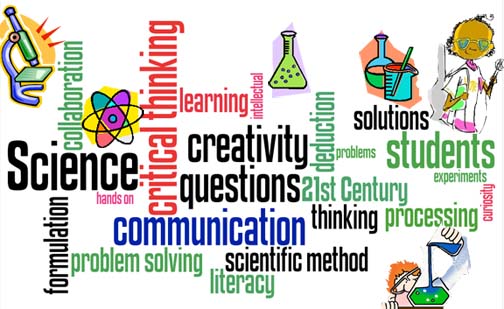21st Century Skills include three areas of creativity:
- Think creatively.
- Work creatively with others.
- Implement innovations.
The elements for these skills include:
View failure as an opportunity to learn; understand that creativity and innovation is a long-term, cyclical process of small successes and frequent mistakes.
Traditional school doesn’t allow for people to take risks and fail. Glenn Wiebe wrote in Are You an Under-taker or a Risk-Taker?
“One of the reasons that we as teachers don’t take risks is our fear of failure. We’re afraid that our state tests scores won’t be good enough or that we’ll look silly in front of kids or that the technology won’t work or that we’ll get calls from parents or…
But we also know that failure is often a prerequisite to success. Teachers take risks because they understand that screwing up is not necessarily a bad thing. Risk-taking involves possible failure. If it didn’t, it would be called Sure Thing-taking.”
 Nothing in life is a sure thing-taking. That is except the answers on a standardized test. Life is not a standardized test or we would have everything labelled A, B, C, or D. Today is so different than yesterday. Look at the economy. Who knows what’s going to happen with the stockmarket? Look at jobs and unemployment. What type of jobs will be available for us in the future? Many jobs we used to offer are no longer an option. Because of that higher ed is changing or needs to change. So why am I talking about failure?
Nothing in life is a sure thing-taking. That is except the answers on a standardized test. Life is not a standardized test or we would have everything labelled A, B, C, or D. Today is so different than yesterday. Look at the economy. Who knows what’s going to happen with the stockmarket? Look at jobs and unemployment. What type of jobs will be available for us in the future? Many jobs we used to offer are no longer an option. Because of that higher ed is changing or needs to change. So why am I talking about failure?
For hundreds of years, people were preparing for factory jobs. That’s why schools were set up in that model. They needed to know how to follow orders and not question. Failure was NOT an option. Candidates for most jobs now need critical thinking skills and to stand out of the crowd. They need to be remarkable. The only way you can be different is to take risks, fail, and come up with new ideas. You also need to build up a network of people you can ask because the world is changing so fast. You won’t find the answer in a book. You may not even find the answer online. You will need to know how to collaborate and work together as a team. Each of the team members will bounce ideas off of the other members of the team; some ideas work, some don’t. You learn from things that don’t work.
“I have not failed. I’ve just found 10,000 ways that won’t work.”
― Thomas A. Edison
We want our kids to be inventors, thinkers, team players, and innovators. The only way to do that is to create a learning environment that encourages failure or new ways that won’t work. I believe the secret to success is failure. We need to create an environment that challenges students so they struggle with unfamiliar or difficult information. Why make it easy for someone to learn? Why is it that teachers are working harder now than ever? The students need to be the hardest working people in the room and challenged so they are excited about the topic.
When you look at children playing a game that challenges them in a good way, they are motivated. They don’t win right away. They get feedback right away. What is the fun in winning right away or all the time. The fun is in challenging themselves beyond what they know. I know myself and how I am writing and taking risks to write down new thoughts. I learn from you. I learn from others. I don’t have to have the right answers all the time. That’s what learning is all about. Challenging yourself to change; trying new things and failing and trying again.
 Here’s a new challenge: The 2012 National STEM Video Game Challenge that opened today is a multi-year competition whose goal is to motivate interest in STEM learning among America’s youth by tapping into students’ natural passion for playing and making video games. Go ahead and show your students this challenge. It is open to multiple ages. They have until March 2012. Have them experiment, fail, and come up with something amazing. They will learn so much.
Here’s a new challenge: The 2012 National STEM Video Game Challenge that opened today is a multi-year competition whose goal is to motivate interest in STEM learning among America’s youth by tapping into students’ natural passion for playing and making video games. Go ahead and show your students this challenge. It is open to multiple ages. They have until March 2012. Have them experiment, fail, and come up with something amazing. They will learn so much.





[…] Challenge, Fail, Creativity, and Learning | Barbara Bray – Creative … Creativity, Failure and Learning. Science 21st Century Skills 21st Century Skills include three areas of creativity: Think creatively. Work creatively with others. Implement innovations. Source: barbarabray.net […]
[…] Challenge, Fail, Creativity, and Learning | Barbara Bray – Rethinking Learning Create a learning environment that encourages creativity, failure, innovation, and teamwork. Students need to work harder and challenge themselves to learn in new ways. Source: barbarabray.net […]
[…] Challenge, Fail, Creativity, and Learning | Barbara Bray – Creative … […]
[…] Challenge, Fail, Creativity, and Learning | Barbara Bray […]
[…] Challenge, Fail, Creativity, and Learning | Barbara Bray – Creative … […]
[…] jQuery("#errors*").hide(); window.location= data.themeInternalUrl; } }); } barbarabray.net – Today, 11:40 […]
[…] Creativity, Failure and Learning. Science 21st Century Skills 21st Century Skills include three areas of creativity: Think creatively. Work creatively with others. Implement innovations. […]
[…] Create a learning environment that encourages creativity, failure, innovation, and teamwork. Students need to work harder and challenge themselves to learn in new ways. […]